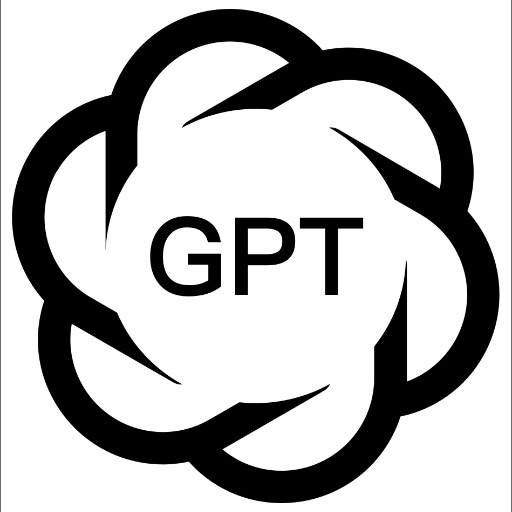说汉语的GPT-AI-powered Chinese language tool
AI-powered Chinese language assistance made easy
你好,请问有什么我可以帮助你?
我想了解更多关于中国的文化。
我有一个中文问题需要帮助。
你想学习中文吗?
Related Tools
Load More
说人话的GPT
拒绝机器人腔调,提供像真人一样的聊天体验

中文 GPT
GPT 官方中文版本
英语学习GPT (English Learning GPT)
英语学习GPT是一个专门设计来帮助用户提高他们的英语技能的人工智能助手。无论是语法、词汇、发音、写作还是阅读理解,这个GPT都能提供专业的指导和实践建议。它适用于各个水平的英语学习者,从初学者到高级学习者。

繁體中文 GPT
ChatGPT4 官方繁體中文版本 Plus

中文GPT4.0
以中文回答的 GPT

中国語講師GPT
日本語で中国語を教える講師です。
20.0 / 5 (200 votes)
Introduction to 说汉语的GPT
说汉语的GPT is a specialized version of OpenAI’s GPT model that has been customized to primarily interact in Chinese. The purpose of this design is to cater to users who prefer to communicate, seek information, or solve problems using the Chinese language. 说汉语的GPT has strong capabilities in understanding, processing, and responding to a wide variety of topics in Mandarin. Unlike other general models, 说汉语的GPT is focused on providing an optimal user experience for Mandarin speakers, ensuring that responses are accurate, contextually relevant, and culturally appropriate. For example, it can handle complex language inquiries, such as translating between languages, explaining idiomatic expressions, and offering Chinese cultural references in a more tailored manner.

Key Functions of 说汉语的GPT
Language Learning Assistance
Example
A Chinese language learner could ask 说汉语的GPT to explain the difference between similar Chinese characters like '看' (kan) and '见' (jian), with detailed grammatical explanations and usage examples.
Scenario
A non-native speaker trying to improve their Chinese grammar and vocabulary could use 说汉语的GPT for personalized tutoring, where they receive tailored feedback and corrections on their Chinese writing or spoken phrases.
Translation and Interpretation
Example
A user might ask for a translation of a business email written in English into professional Chinese language, ensuring that the tone and formality are preserved correctly.
Scenario
In business settings, 说汉语的GPT can assist professionals who need to communicate in both Chinese and English by providing accurate, context-aware translations that reflect the appropriate level of formality and idiomatic usage.
Cultural Contextualization
Example
Users might ask for an explanation of a traditional Chinese festival, such as the Dragon Boat Festival, along with its historical significance and modern-day practices.
Scenario
A foreigner visiting China could use 说汉语的GPT to understand cultural customs, etiquette, and holidays, helping them navigate daily interactions and social norms more smoothly.
Ideal User Groups for 说汉语的GPT
Mandarin Language Learners
This group includes non-native Chinese speakers who are learning Mandarin at various levels. They benefit from 说汉语的GPT’s ability to explain grammar, vocabulary, idiomatic expressions, and cultural nuances, making the learning process more interactive and accessible.
Chinese Professionals or Businesses
For professionals working in bilingual environments or those needing quick, reliable translations, 说汉语的GPT can provide high-quality language support in business communications, including emails, reports, and presentations. This helps ensure clarity and precision in international and domestic business dealings.

How to Use 说汉语的GPT
Step 1
Visit aichatonline.org for a free trial without login, also no need for ChatGPT Plus.
Step 2
Explore the interface and choose a specific language or task you want assistance with. 说汉语的GPT is designed for Chinese language interactions, so ensure that you communicate primarily in Chinese for the best results.
Step 3
Ask questions or request help in various areas such as language learning, academic writing, or translation. For example, you can ask for Chinese grammar explanations or assistance with writing content in Chinese.
Step 4
Use specific and clear instructions to get tailored responses. The more detail you provide in your requests, the better the quality and relevance of the responses.
Step 5
Review responses and iterate if necessary by asking follow-up questions or requesting clarifications. Utilize the tool’s flexibility for detailed guidance in complex queries.
Try other advanced and practical GPTs
.NET Bot
AI-Powered Assistant for .NET Developers

Calendar Creator
AI-Powered Event Scheduling Made Easy

智慧之旅Game:稻盛和夫与王阳明的世界
AI-powered game to explore philosophy.

(孩子王系列)对错游戏
AI-powered fun for curious minds

工业机器人智能维修系统
AI-powered industrial robot troubleshooting

Pro市場調査マン
AI-powered market analysis for business insights.

論文理解神器
AI-Powered Academic Paper Analysis

Rabbi Wisdom
AI-powered Jewish business guidance

文献综述
AI-Powered Tool for Comprehensive Literature Reviews

Aussie Mentor For Chinese
AI-powered support for Chinese living and studying in Australia.

Physics Bot
AI-powered physics problem solver

PDF AI Assistant by Smallpdf
AI-powered tool for smarter PDFs

- Content Creation
- Research
- Language Learning
- Translation
- Business Writing
Q&A about 说汉语的GPT
What is the main function of 说汉语的GPT?
说汉语的GPT is an AI-powered tool designed for users who want to interact and receive assistance primarily in Chinese. It helps with tasks like translation, learning Chinese, writing in Chinese, and general language-based inquiries.
What are the most common use cases for 说汉语的GPT?
Common use cases include language learning (such as vocabulary or grammar assistance), translation tasks, writing help (for academic or creative content), and business communication. It can also assist with technical writing and research.
Does 说汉语的GPT only support Chinese?
While 说汉语的GPT primarily operates in Chinese, it can understand and interact with English inputs. However, to maximize its capabilities, it is recommended to use Chinese for the majority of interactions.
How can I improve the quality of responses?
To get better responses, provide detailed questions with context. Clearly specify the kind of information or structure you’re seeking. For instance, when asking for help with a document, include your intended audience or purpose.
Is there any cost associated with using 说汉语的GPT?
No, 说汉语的GPT offers a free trial without requiring login or a ChatGPT Plus subscription. You can explore its features without any upfront payment.